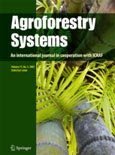Agroforestry is an alternative to unsustainable agricultural practices, aiding in the mitigation of greenhouse gas emissions and climate change. However, accurately assessing the carbon sequestration potential of agroforestry tree species remains challenging due to reliance on destructive, time-consuming, and resource-intensive methods that hinder forest cover restoration in Côte d'Ivoire. Commonly used pantropical allometric equations lack specificity and precision, complicating carbon sequestration estimates. To address this, our study focused on four agroforestry species in Côte d'Ivoire: Theobroma cacao, Hevea brasiliensis, Coffea canephora, and Anacardium occidentale. We compared aboveground biomass estimates obtained using general and specific allometric equations for these species, collecting dendrometric measurements from 655T. cacao, 69 H. brasiliensis, 90 C. canephora, and 73 A. occidentale individuals. No concordance was found between generic and specific allometric equations using a linear regression model. The general equation significantly underestimated aboveground biomass by 20.06 kg, 1.10 kg, 7.28 kg, and 11.50 kg per tree for T. cacao, H. brasiliensis, C. canephora, and A. occidentale, respectively. The differences indicated a carbon sequestration potential 17.2% to 18.7% higher when using specific equations in cocoa-based agroforestry systems. This study underscores the urgency of developing customized allometric equations for more precise carbon sequestration assessments, enhancing the accuracy of agroforestry's contribution to climate change mitigation.
DOI:
https://doi.org/10.1007/s10457-024-01049-9
Score Altmetric:
Dimensions Nombre de citations:


















